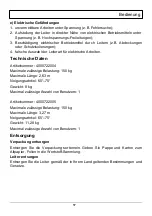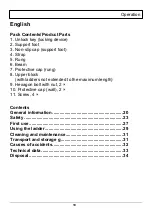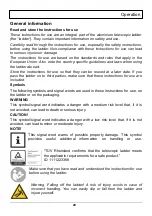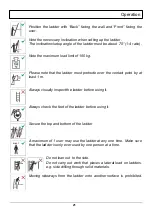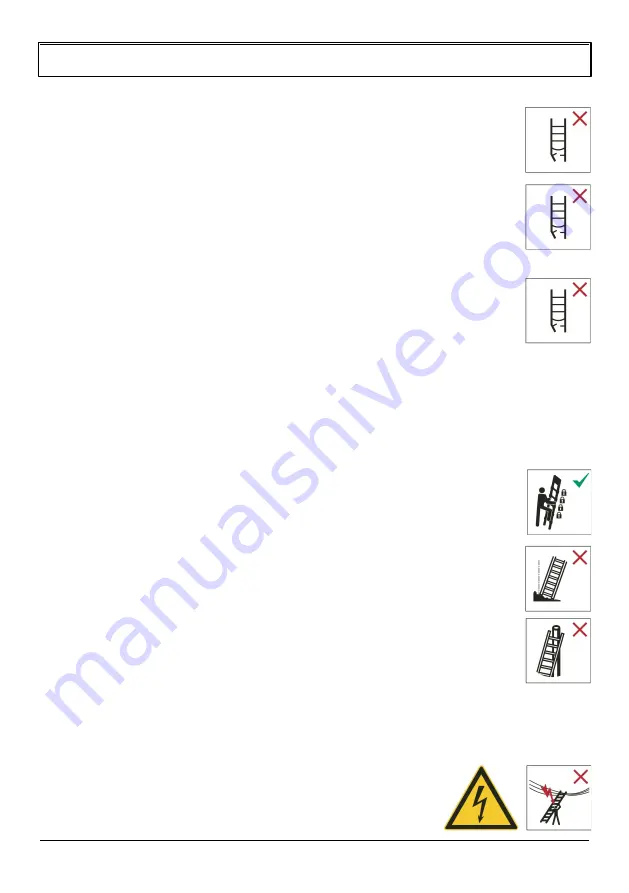
Operation
24
and property damage.
− Inspect the ladder after delivery and before initial use, to check the
condition and the function of all parts.
− Visually inspect the ladder for damage and safe use at the start of
every work day on which the ladder is to be used.
− Make sure that the ladder is suitable for the relevant application.
− Do not use the ladder if it is damaged.
− Remove all dirt on the ladder, e.g. wet paint, dirt, oil or snow, before using the
ladder.
− Carry out a risk assessment, in consideration of the legal requirements in the
country of use, before using the ladder at work.
− The ladder must be set up in the correct position, e.g. correct angle for lean-to
ladders (inclination of roughly 1:4) with the rungs and treads level.
− Locking devices, where attached, must be completely removed
before use.
− The ladder must be placed on a flat, level and immobile surface.
− A lean-to ladder should lean against a flat, solid surface and be
secured before use, e.g. by fastening the lean-to ladder or by using
an appropriate setup to ensure its stability.
− The ladder must never be moved to a new position from the top.
− Pay attention to the risk of collision when moving the ladder into position, e.g.
with pedestrians, vehicles or doors. Lock doors and windows in the work area
if possible, but not emergency exits.
− Check for any potential hazards in your environment,
such as high-voltage overhead lines or other exposed
electrical equipment, before setting up and climbing








